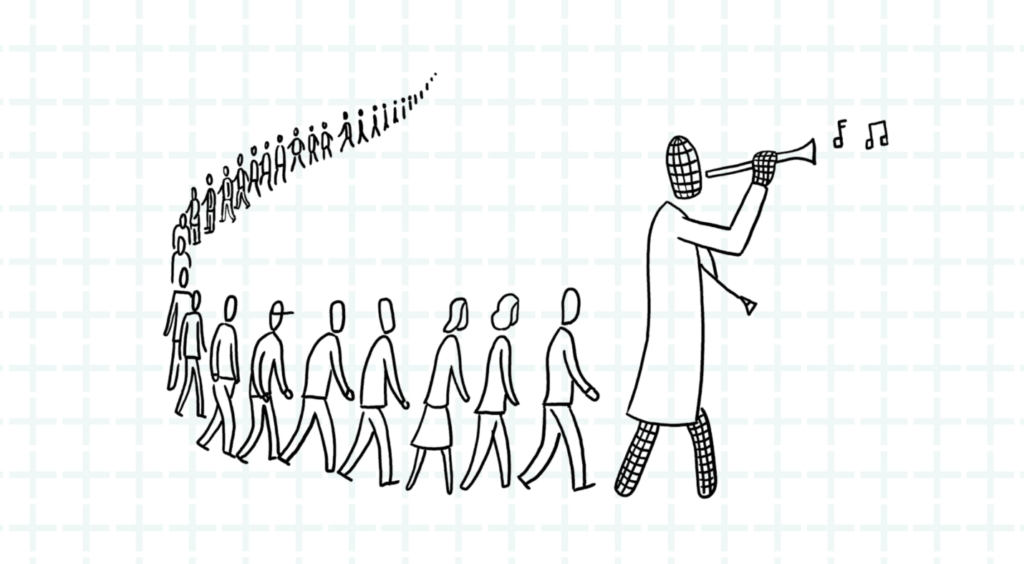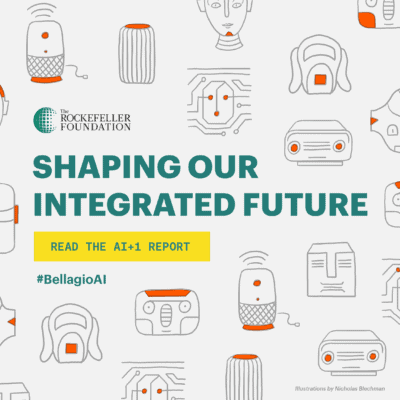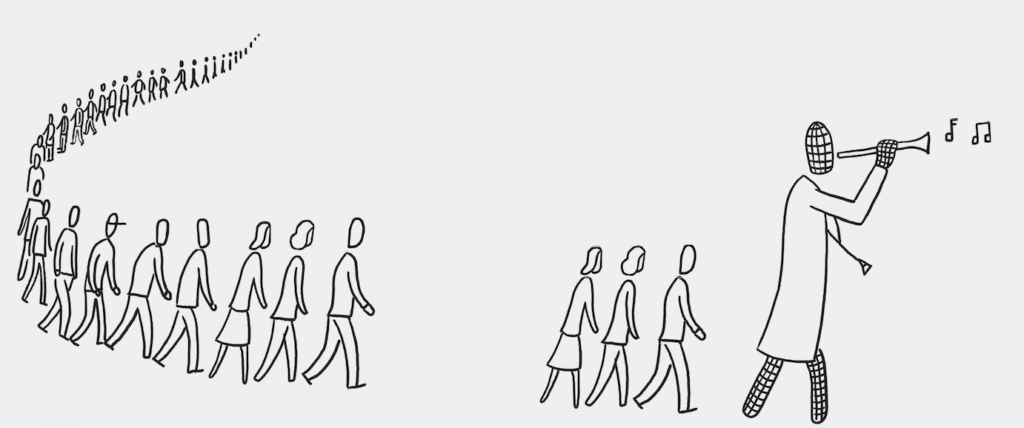Data projects secret to success is not the algorithm

Editor’s Note: This article was originally published by The Rockefeller Foundation in its AI+1 report and appeared on the Cloudera Foundation website. In April 2021, the Cloudera Foundation merged with the Patrick J. McGovern Foundation.
by Claudia Juech
July 9, 2020
Case study: Digital health services in Burkina Faso
The Data4Good movement often references the sophisticated use of data in the private sector as what the nonprofit space needs— setting aside concerns about ethical corporate-data use for a moment. However, nonprofits face fundamentally different data challenges beyond the obvious requirement of modeling the highest standards of responsible data use.

Companies with business models that rely on the use of data (almost all of them today) employ hundreds of software engineers, designers and marketers to manage, store, analyze and realize revenue from data and thus must continually improve their data management to become evermore sophisticated and stay ahead of the competition.
Success in the nonprofit space, by contrast, generally hinges on the quality of an implementation — not on the cutting-edge algorithm. And as a result, data projects that strive to solve societal challenges at scale are difficult to execute successfully because:
- They require a multistakeholder approach involving the individuals or communities facing the challenge, as well as several layers of government and other data holders.
- Their governance is complex because many governments have not yet established privacy and data ownership regulations.
- Better information doesn’t necessarily lead to better action. Just as a good policy brief doesn’t necessarily make for better policies, better data insights may not necessarily trigger the desired action.
Building on strong relationships
The work of the Cloudera Foundation’s grantee Terre des hommes (Tdh), Switzerland’s leading child relief organization, illustrates these challenges and how they can be overcome.
Tdh’s Integrated eDiagnostic Approach supports health-care workers in rural clinics in Burkina Faso in their diagnoses and treatments of preventable diseases in children younger than 5 years old. The health-care workers manage cases through a tablet app version of WHO’s and the United Nations Children’s Fund’s Integrated Management of Childhood Illness (IMCI) protocol. IMCI consists of a sequence of steps and information on how to address common though potentially life-threatening childhood conditions such as pneumonia, diarrhea and measles.
Roughly 1,150 clinics, or 70% of all those in the country, now use the tool for consultations, which topped 5 million by January 2020.
Getting there wasn’t easy. Tdh had neither hard evidence of the health benefits nor of the exact cost savings it might gain with the new approach. The organization had spent many years convincing the government to support the delivery of those services, winning approval in 2011 to begin in 39 health centers.
Providing credibility to build a case was Tdh’s 40-year history of working in Burkina Faso and its positive relationships with decision-makers after all those years. But what perhaps helped most was co-designing the tool with its future users at health facilities and the district level from the very start.
Since the project’s inception, 11 iterations have incorporated feedback and suggestions for improvement from all user groups.
Tdh’s clear commitment to transfer the data and its management to the government was another critical success factor, as was holding workshops to share learnings and facilitate the handover since the tool’s launch.
Incentives matter
Acknowledging and incorporating incentives into the design of the digital initiative also played critical roles in ensuring the tool’s buy-in and use. And even though motivations to use or support the app may have overlapped in some cases, all stakeholders cited distinct benefits that were subsequently prioritized for design and execution by:
- The Ministry of Health (MoH): Cost savings, better quality of care and disease surveillance and more timely and accurate information
- Those at the district level: Improved workload management and performance management
- Frontline health-care workers: Easier ways to work because MoH support meant that workers would no longer be required to enter data twice —into both paper and digital versions— and elevated professional status stemming from the use of a hand-held device rather than a paper-based version
- Parents or guardians: Trust in technology that would lead to higher quality of care, such as a more thorough check of all of a child’s symptoms
So strong were incentives in some districts where the approach had not yet been implemented that some communities bought the tablets with their own money.
Overwhelmingly, Tdh emphasized in its framing of the new tool the tool’s intent to assist and augment human decision-making rather than replace it.

Ongoing exchanges
Successful implementation beyond launch requires a feedback loop that demonstrates to frontline health-care workers the added value of a digital solution. Monthly reports on performance as well as descriptive statistics made possible by the tool, now form the basis for open group discussions in which health-care workers and district heads exchange learnings about what is working and what needs to improve and why, thereby creating a culture of positive, collective pressure to excel.
Alsoensuring success were efforts not to fall into the build-it-and-they-will-come trap. For example, before revamping a dashboard visualization, Tdh held a workshop with government officials to jointly determine desired indicators.
Using data to successfully predict epidemiological seasonal disease trends will require combining the data with other data sets that influence the community, such as weather observations, population movements, transient market events and locations. To obtain such data from other ministries in Burkina Faso, Tdh has added a government data liaison to the local team.
This case study demonstrates that there is no secret recipe to successfully manage stakeholders in a large-scale data initiative. Responsibility and success are two sides of the same coin. Authentic, transparent and frequent interactions; active listening; and responding to the needs—and wishes— of different groups must be embedded in ongoing execution. A successful approach puts humans and all stakeholders at the center, with the digital technologies as catalysts for impact. For groups behind initiatives like these—nonprofits and funders alike—investing in building and nurturing relationships is paramount.
With thanks to Thierry Agagliate, head of innovation at Terre des hommes Lausanne, and Riccardo Lampariello, head of health program at Terre des hommes Geneva, for their input and review.
Claudia Juech is the Vice President of the Data and Society program.